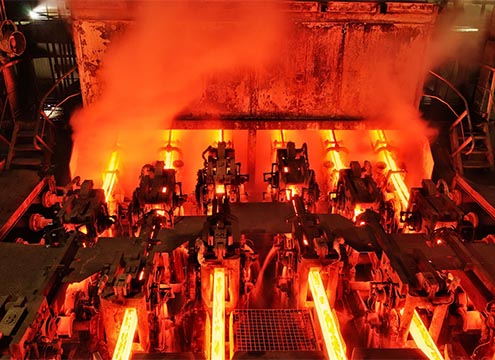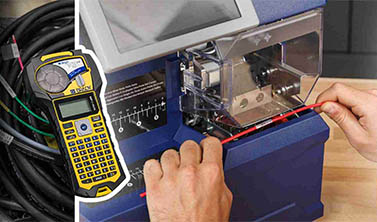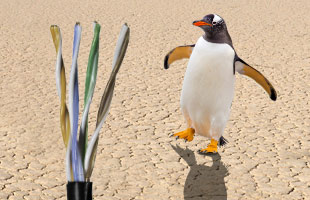 Optimize the Lifespan of Your High-Flex Cables
Optimize the Lifespan of Your High-Flex Cables
Given the cost premium of high-flex cables, appropriate attention should be given to the nuances of how cables should be handled and installed in the cable track (C-track, drag chain etc.). Information on this is readily available on the internet from numerous sources that all generally agree in sum and substance. Yet once or twice a year, a manufactures receive an exceedingly damaged (generally corkscrewed) cable back for examination. Occasionally they learn something that they can use to improve cable designs. More often than not, what they find is that there has been improper dress-out of the cable on the machine. Rather than rehash all the basic considerations, this whitepaper focuses on the most common root causes for premature cable failure and how to avoid them.
What is corkscrewing and how is it caused?
A cable is said to have corkscrewed when repeated motion or handling alters its appearance from nominally straight to undulated, looking something like a traditional corkscrew. The cause of the corkscrewed appearance is shifting or migration of conductors from their original position to a new position, causing other elements to be displaced and resulting in a corkscrew appearance.

The upper cable shows significant corkscrewing, while the lower cable has just begun to corkscrew.
Don’t underestimate the Quiet Zone
The “quiet zone” is a length of cable as it exits the cable tray where the cable is supported and can keep free from turns and small radius bends. It’s widely understood that when a multi-conductor cable is bent at a 180° angle, the conductors located at the inside the bend radius will be compressed (i.e. getting shorter) while the conductors on the outside of the bend radius will be expanding (i.e. getting longer). Now consider these forces of compression and expansion in a dynamic environment where they are traveling back and forth down the cable as the cable is also under rolling flex. What many people don’t realize is that these forces are not as localized as at the bend site, but rather these forces can easily travel several feet. The problem occurs when the forces traveling in one direction meet a restriction that stops their natural propagation and reflects them back in the opposite direction. Clamps, connectors, and bends can all cause such restrictions.
Think about dropping a small pebble in the center of a large pool. A small wave will form and ripple in all directions. If the pebble is small enough and the pool big enough, the waves will have completely dissipated before reaching the sides. Now take that same pebble to a kitchen sink and drop it. The resultant waves will travel to the sides of the sink and be reflected in the opposite direction. The former example is the purpose of the quiet zone.
Ideally, forces are naturally attenuated by the structure of the cable before reaching a restriction. But remember that we are not really talking about a single event, but a combination of forces, positions and movement. In most tracks, cables are repeatedly cycled back and forth increasing the possibility that the forces may become additive (and potentially destructive) at any given point. In such a case given all these forces, one or more of the conductors generates excess length. The excess length of these conductors will try to move the cable outward, and the now shorter conductors opposite them will become the new neutral axis of the cable. When this happens, corkscrewing begins and will get worse with each successive flex cycle.
So how long should a quiet zone be to mitigate corkscrewing? Here’s where you might get different answers from people. You can find advice saying that quiet zone length should be anywhere from 15 to 50 times the cable OD. In truth, there is no good single value that is optimal for every installation scenario. There are several factors to consider such as the number of conductors, AWG size, shielding, and length of the cable. In short, the heavier, more complex a cable is, the longer the quiet zone needs to be. Especially in longer tracks, avoid cables with more than 2 cabling layers. A run of three, 30-conductor cables is far more forgiving than an installation of two, 45-conductor cables. Conversely, for low conductor count cables, one can maintain a shorter quiet zone.
Be respectful of bend radius specifications
Cable bends, especially tight bends, can restrict a cable’s ability to equalize forces between stresses. It is not uncommon for someone to consider how to route and dress out a cable to reach a point of recognition in order to meet the cable bend radius (and quiet zone) specifications. The temptation is to see these specifications as “soft specs” and make a compromise. All too often this can lead to a premature cable failure. What can seem like a good tradeoff in making the installation cheaper and easier can result in machine downtime due to cable failure. In most cases, the cost of downtime and replacement cable assemblies far outweighs the added cost to do it right the first time. If necessary, consider service loops and/or cable supports to dress out the cable on the machine so it meets all installation specifications.
Understand that the cable is only one piece of a complex system
The roles that connectors and clamps can have on the performance of a cable track system are often overlooked. When preparing the cable for connector termination, will the conductors be all cut to the same length or will the length of each be tailored based on where it will be positioned in the connector? Or worse yet, have no standard work established so different operators are doing termination differently from one another? Is the cable being clamped in such a way that the round geometry of the cable core is being distorted? The point here is that when a cable fails, it’s quite common to focus on the cable itself and ignore the other aspects of the system. The reality is that all the components in a cable track system must be correctly designed and installed for it to operate reliably for a long time.
So remember, take the necessary steps to ensure your cables maintain longevity and don’t take ill-advised short cuts in a futile attempt to cut costs.
Xtra-Guard Cable Family
Alpha Wire’s Xtra-Guard cable brings performance and reliability to the biggest challenges in the toughest environments. No matter what extremes your application faces, you’ll find an Xtra-Guard cable that excels in meeting your requirements. Downtime is costly— whether caused by a complete cable failure or from the little glitches that occur when a cable doesn’t live up to the demands of the application. With Xtra-Guard cable, you won’t have to worry about downtime anymore.
Hazard-matched to survive in the most demanding operating conditions, Xtra-Guard cable is the longest-lasting, highest-performing cable available. Field-proven application performance, year after year, has made Xtra-Guard cable the first choice of engineers for more than three decades.
Superior by Design
Xtra-Guard performance cable is designed to meet your needs. Its round construction makes it easier to install, seal, and route. With nearly 5000 standard Xtra-Guard® Performance Cable Ultimate Performance in Extreme Environments constructions and the industry’s broadest range of gauges, conductor counts, shielding options, and jacket color choices, Xtra-Guard cable sets the global standard for reliable performance.
| Xtra-Guard Flex Cables | Industrial Series | EcoGen™ Series | |||||
| Standard Flex (65000 Series) | Continuous Flex (85000 Series) | Continuous Flex Data (86000 Series) | Torsion Flex (87000 Series) | Series XM | Series F | EcoFlex | |
| Flex Cycles (Million) | 1 | 14 | 6 | 1 | 12 | 20 | 1 |
| Flex Type | Bending Random |
Rolling Bending Random |
Rolling Bending Random |
Torsion | Rolling Bending Random |
Rolling Bending Random |
Rolling Bending Random |
| Duty Cycle | Low-Moderate | High | High | High | Moderate-High | High | Moderate |
| Voltage | 600 | 600 | 300 | 600 | 600/1000 | 600 | 600 |
| Insulation | PVC | PVC | SR-PVC | TPES | PVC/Nylon | PVC/Nylon | mPPE |
| Jacket | PVC | PVC | PVC | PU | PVC | PVC | mPPE |
| Shielding Options | Unshielded Braid (85%): Double Jacketed | Unshielded Braid (85%): Double Jacketed | Unshielded Foil + Spiral (90%) Foil + Braid (90%) | Unshielded Spiral (90%) |
Unshielded Braid (85%) | Unshielded | Unshielded Braid (85%) Foil + Braid (70%) |
| Wire Range (AWG) |
20 to 2 | 20 to 2 | 28 to 22 | 24 to 10 | 8 to 18 | 18 to 8 | 28 to 10 |
| Conductor Count (Max) |
50 | 50 | 24 | 7 | 65 | 65 | 18 |
| Temperature Range, Flexing |
-5°C to +90°C | -5°C to +90°C | -10°C to +105°C | -10°C to +80°C | -5°C to +90°C | -5°C to +90°C | -40°C to 105°C |
| UL MTW | — | — | — | — | ✓ | — | — |
| UL WTTC | — | — | — | — | ✓ | — | — |
| UL TC-ER | — | — | — | ✓ | ✓ | ✓ | — |
| UL PLTC | — | — | ✓ | — | — | ✓ | — |
| UL Oil Res. | ✓ | ✓ | ✓ | — | ✓ | I/II | — |
| UL Sun Res. | — | — | — | — | ✓ | ✓ | — |
| UL AWM | 2587 | 2587 | 2261 | 20234 | — | — | 21819, 21492 |
| VDE 0472 Oil Res. |
✓ | ✓ | — | — | — | — | — |
| CSA AWM | I/II A/B FT1 | I/II A/B FT1 | I/II A/B FT4 | I/II A/B FT1 | I/II A/B FT4 | ✓ | I/II A/B FT1 |
No matter how demanding the environment, you want a cable with the performance and reliability to put your mind at ease. You want a cable that fits the application, no matter what extremes of temperature, oils and solvents, electrical noise, and other hazards it must withstand.
Alpha Wire engineeres wire and cables that excel in taming tough applications. From the harsh environment of a factory floor to critical controls on an offshore oil rig, cables from Alpha Wire are working reliably, day-in and day-out. Every cable is designed and manufactured to meet the critical demands of real-world applications. Using premium materials, advanced manufacturing, and world-class quality control, Alpha Wire manufactures every cable knowing its operation is critical to an application’s success.
Make Alpha Wire your first choice for reliable performance.




